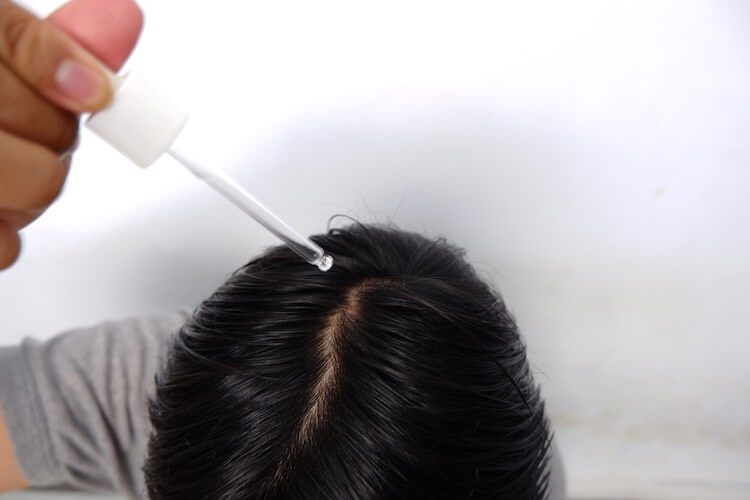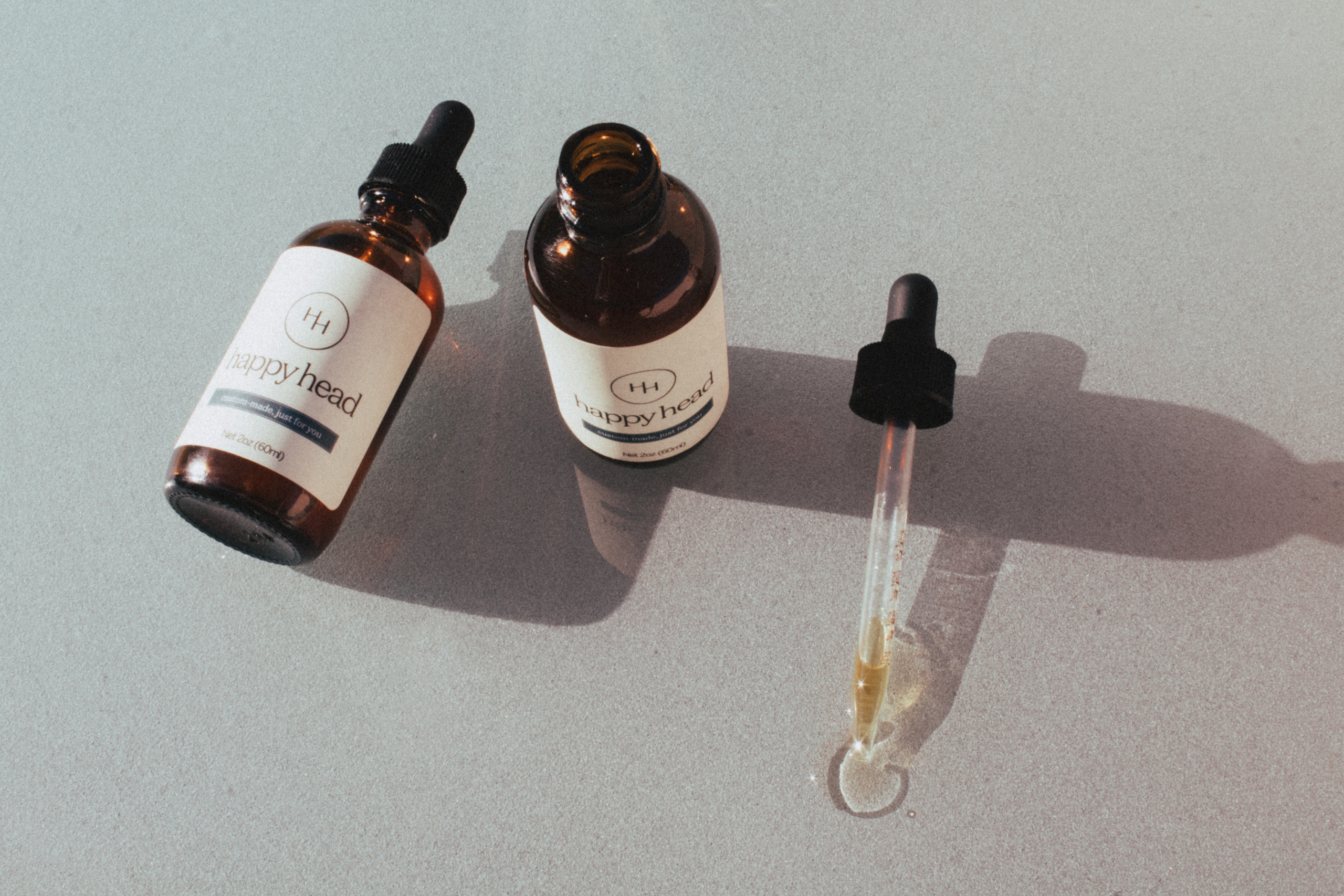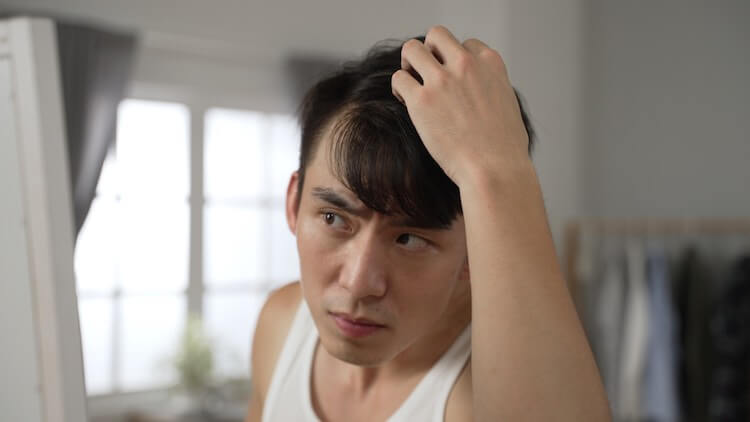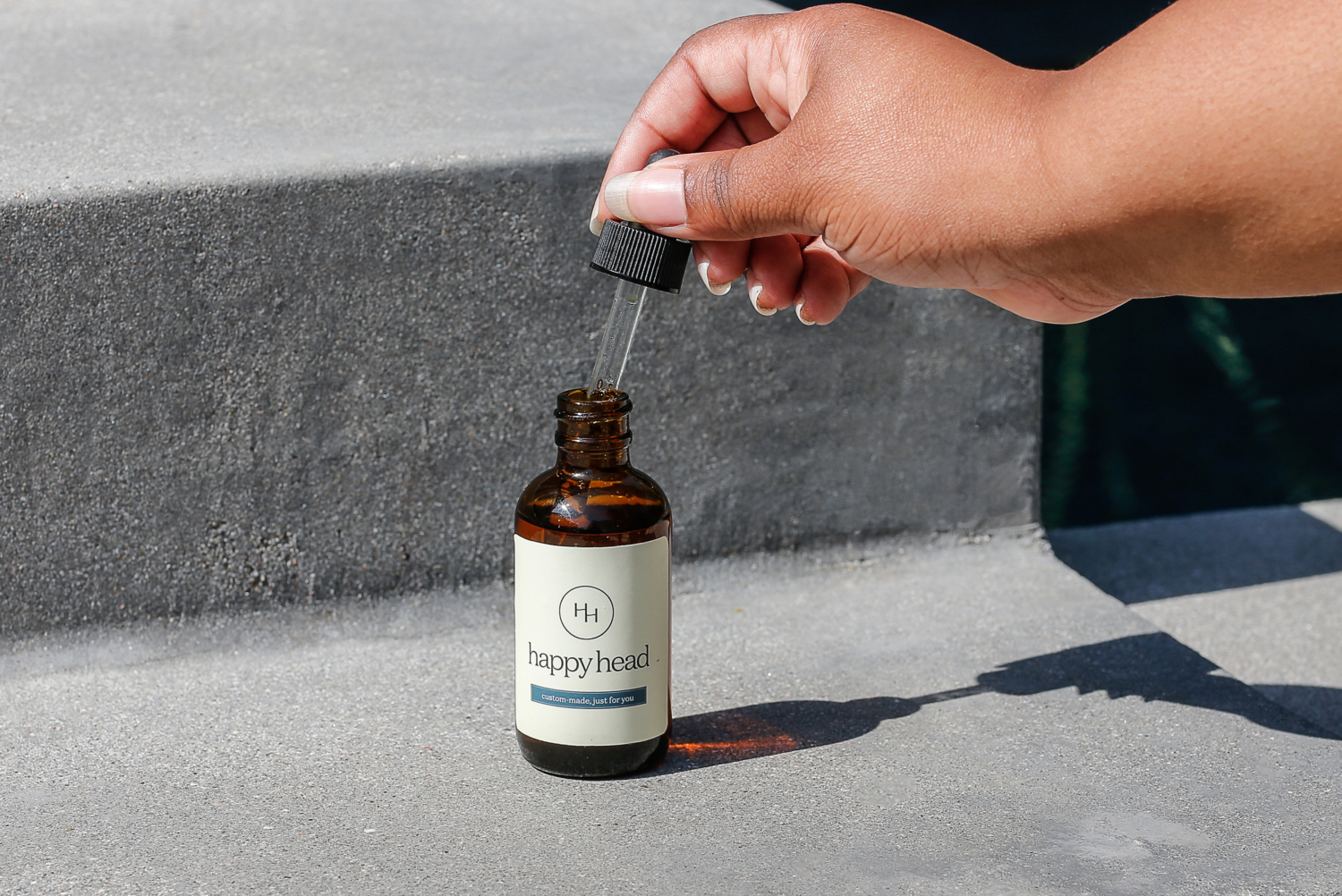Minoxidil Liquid Or Foam: Which One Is Right for You?

Once you’re on the path toward hair restoration, you’ll be faced with a variety of choices. For example, you may find yourself with the option of using foam or liquid Minoxidil like our customizable liquid topical Minoxidil treatment here at Happy Head. While the purpose of the medication is the same, they both differ in terms of application and absorption. Learning about the differences between Minoxidil foam and Minoxidil liquid can help you make an informed decision when the time comes to make your choice.
What is Minoxidil?
According to the National Library of Medicine, Minoxidil is a medication that’s commonly used for treating hair loss. Minoxidil is a vasodilator–a medication that widens blood vessels. Because of its ability to expand blood vessels, oral minoxidil was initially approved by the Food and Drug Administration (FDA) for the treatment of severe high blood pressure. However, people who were prescribed the drug for their blood pressure began reporting a welcome side effect – hair growth! As a result, doctors started prescribing minoxidil throughout the 1980s as an off-label medication to treat hair loss clients.
Topical Minoxidil—available in 2% and 5% concentrations—is an effective hair loss treatment for both men and women. Minoxidil is a vasodilator, which means it works by widening the blood vessels in the scalp, which then increases blood flow to the hair follicles. This increased blood flow delivers more nutrients and oxygen to the hair follicles, helping to stimulate hair growth. In addition, Minoxidil increases the size of hair follicles, which can lead to thicker, healthier hair. By “feeding” hair follicles, Minoxidil results in improved hair growth, healthier follicles, and longer strands. (01, 02)
Is Minoxidil an Effective Treatment for Hair Loss?
Several clinical studies have investigated the efficacy of Minoxidil for the treatment of hair loss. One study published in the Journal of the American Academy of Dermatology found that topical Minoxidil was effective in promoting hair growth in men with androgenetic alopecia, a common form of hair loss. The study involved 984 men with mild to moderate hair loss who were randomly assigned to receive either 5% topical minoxidil, 2% topical minoxidil, or a placebo. After 48 weeks of treatment, both the 5% and 2% minoxidil groups had significantly more hair growth than the placebo group. (03)
What Types of Hair Loss Does Minoxidil Treat?
Although topical Minoxidil has received approval from the FDA for the treatment of specific hair loss conditions, the medication is also used to effectively treat a variety of hair loss disorders. (04)
The FDA currently approves topical Minoxidil for the treatment of these hair loss disorders:
- androgenetic alopecia
- female & male pattern hair loss
However, Minoxidil is also successfully prescribed off-label for:
- alopecia areata
- beard and eyebrow growth
- central centrifugal alopecia
- chemotherapy-induced hair loss
- frontal fibrosing alopecia
- telogen effluvium
Minoxidil is available in both topical and oral forms. The topical formulation is applied directly to the scalp or other affected areas, while the oral medication is ingested in tablet form. When applying the topical version, users will have to choose between foam or liquid Minoxidil. At Happy Head, our board-certified dermatologists offer both oral and liquid forms of Minoxidil, so after reading this article you can set up a free consultation with them online here.

Minoxidil Foam Or Minoxidil Liquid?
When deciding between foam or liquid Minoxidil, users may need to consider a few factors. While both formulations are effective in promoting hair growth, there are some differences between them that may influence which one is best for a particular individual.
Minoxidil Liquid: Pros and Cons
Minoxidil liquid is the tried and true original formulation of the medication, and it has been available since the 1980s. This liquid version is applied directly to the scalp using a dropper, typically twice a day. One advantage of the liquid form is that it allows for more precise application to the scalp. This can be especially useful for individuals who have a specific area of the scalp where they are experiencing hair loss, as it allows them to target that area more effectively.
Furthermore, some individuals may prefer the liquid formulation because it can be easier to spread evenly over the scalp. The liquid version of Minoxidil slides freely between hair strands. It also flows through the scalp’s dips and valleys much more thoroughly than the foam version., ensuring adequate coverage. Liquid Minoxidil also offers dry scalp or brittle hair some moisture, improving hair health.
Along with these advantages comes a few disadvantages. The liquid version of Minoxidil can make an oily scalp look greasy. In addition, oily hair may look even oilier when using liquid minoxidil. Another disadvantage of the liquid formulation is that it can be messy and time-consuming to apply.
Some people find it challenging to control the amount of medication that’s dispensed from the dropper. The solution to this problem is to use a dropper that’s calibrated and specific to the topical. Lastly, the liquid can take some time to dry after application. For individuals who are in a hurry to get out the door, waiting for the liquid to dry can be a small inconvenience.
Minoxidil Foam: Pros and Cons
Minoxidil foam is a newer formulation that was introduced in the early 2000s. Much like hair mousse, the foam is applied directly to the scalp using a nozzle. One benefit of the foam formulation is that it makes application a breeze and the foam dries quickly. Minoxidil foam is less messy than liquid formulations.
Because the foam is applied using a nozzle, it is easy to control the amount of medication that is applied, and there is less risk of accidentally spilling or wasting the medication. In addition, the foam is less likely to drip or run down the scalp, which can be a problem with the liquid version.
One significant disadvantage of the foam formulation is that it’s not as easy to target specific areas of the scalp. Because the foam is applied using a nozzle, targeting a specific area of the scalp is challenging. In addition, the foam tends to sit on top of any hair rather than flow to the scalp area. Therefore, foam requires a few extra steps to massage the medication directly onto the scallop.
Which is More Effective?
In terms of effectiveness, both the liquid and foam formulations of Minoxidil have been shown to be effective in promoting hair growth. Several clinical studies have investigated the efficacy of Minoxidil for the treatment of hair loss, and most have found that both formulations are effective in promoting hair growth and improving hair density.
One study published in the Journal of the American Academy of Dermatology compared the efficacy of 5% minoxidil foam to 5% minoxidil liquid in the treatment of androgenetic alopecia in men. The study included 45 men who were randomly assigned to receive either the foam or the liquid formulation. After 24 weeks of treatment, both groups showed significant improvement in hair count and hair thickness. Therefore, both foam and liquid are effective treatments for hair loss. (05, 06) As mentioned, at Happy Head, we’ve found our patients to use less product when using the liquid topical form of Minoxidil since the liquid gives you more control over the placement of the liquid topical medication as opposed to losing most of it in the hair when using a foam version.
Minoxidil Foam & Minoxidil Liquid Side Effects
Both Minoxidil foam and liquid have similar side effects. Because both formulations are topical, the most common side effect is skin irritation. Along with irritation, redness, itching, and dryness of the scalp can also occur.
While these symptoms can be bothersome, they are generally mild and usually resolve on their own with continued treatment. A few rare side effects include fluid retention, blood pressure changes, and electrolyte imbalances. For the most part, Minoxidil topical, both foam and topical, is safe and effective for promoting hair growth in both men and women.
Which One Should You Choose? Foam Or Liquid
Happy Head’s liquid Minoxidil is made with a special base solution, which is designed to soothe the scalp and minimize the appearance of side effects. Unlike other Minoxidil formulations, Happy Head’s gentler formula reduces skin irritation. Are you wondering which topical hair loss treatment is right for you? Consult with our board-certified dermatologists to develop an individualized hair regrowth plan with you in mind.
Resources:
(01) https://www.ncbi.nlm.nih.gov/pmc/articles/PMC6691938/
(02) https://pubmed.ncbi.nlm.nih.gov/15034503/
(03) https://www.jaad.org/article/S0190-9622(03)03692-2/fulltext
(04) https://www.ncbi.nlm.nih.gov/books/NBK482378/
(05) https://www.sciencedirect.com/science/article/abs/pii/S0190962210018116
(06) https://www.ncbi.nlm.nih.gov/pmc/articles/PMC6691938/





